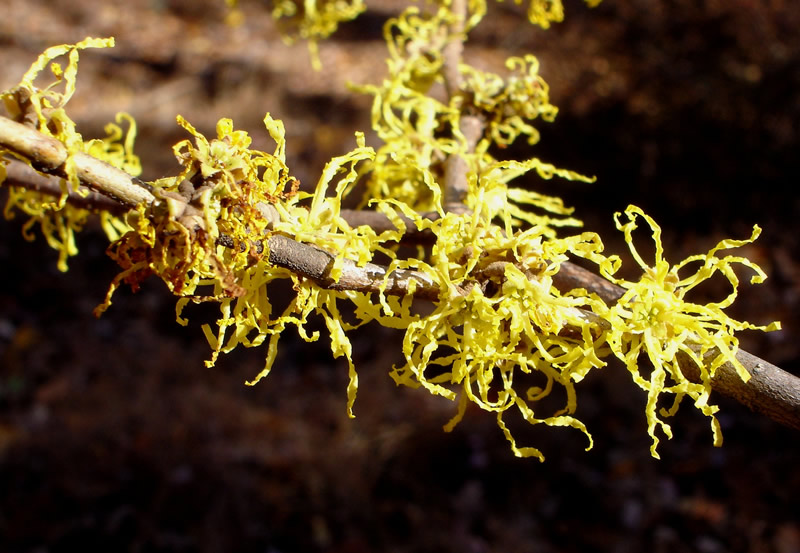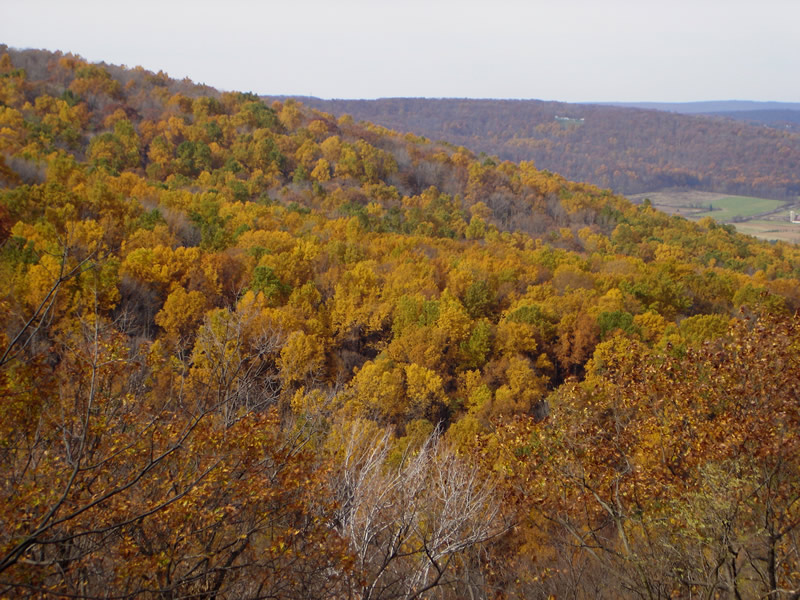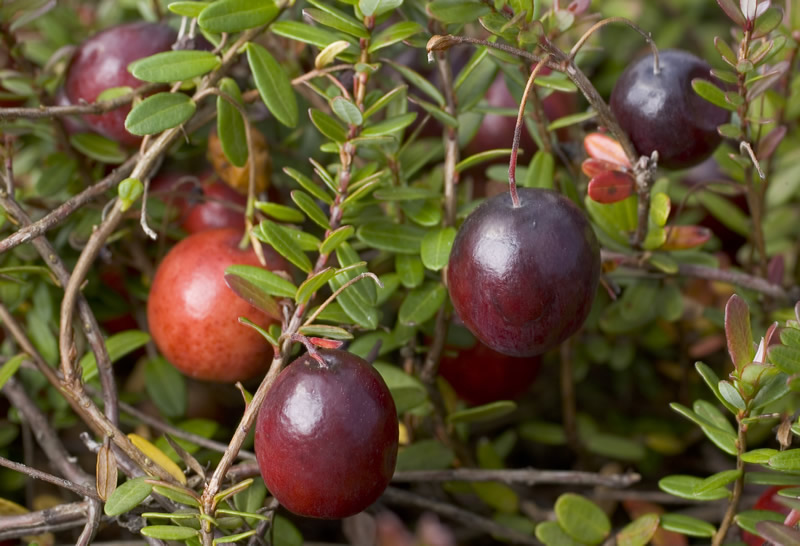Tannins

Have you ever bitten into an unripened apple and experienced an astringent (dry, puckery) feeling in your mouth? You have experienced tannins.
Tannins are complex chemical substances derived from phenolic acids (sometimes called tannic acid). They are classified as phenolic compounds, which are found in many species of plants, from all climates and all parts of the globe. They are large molecules that bind readily with proteins, cellulose, starches, and minerals. These resulting substances are insoluble and resistant to decomposition. Tannins occur in many species of coniferous trees as well as a number of flowering plant families. These tannins can leach out of the plants. The water in the soil becomes rich with tannins and seeps into the ground water or drains into lakes and streams. These waters become brown in color and look like tea.
The word tannin comes from the old German word tanna meaning oak. It refers to the use of wood tannins derived from oak trees that were used to convert animal hides into leather. Other cultures from antiquity obtained tannins from willows (Salix spp.), quebracho (Scinopsis balansae), sumac (Rhus spp.), maples (Acer spp.), wattle (Acacia spp.), eucalyptus (Eucalyptus spp.), and red mangrove (Rhizophora spp.).
Tanning is an ancient technique that is estimated to have occurred as long ago as 5000 B.C. in Egypt. Ancient Greeks and Romans are known to have used oak to tan animal skins into leather. In China tanning occurred many thousand years ago.
Different colors, textures, and durability of leathers were achieved by using different formulations of plant tannins referred to as “tanning liqueurs”.
In addition to tanning leather, tannins are used in photography, as mordants in dyeing, clarifying wine and beer by precipitating proteins out of them, and as astringents in medicine.
Tannins are found commonly in the bark of trees, wood, leaves, buds, stems, fruits, seeds, roots, and plant galls. In all of these plant structures, tannins help to protect the individual plant species. Tannins that become stored in the bark of trees protect the tree from being infected by bacteria or fungi. In this case, the tannins precipitate out the enzymes and other protein exudates from bacteria and fungi thus not allowing these organisms to infect the tree. Many bud scales on woody plants contain tannins to protect the inner leaf tissue from being consumed and in many seed plants the initial set of leaves from a germinating seed are also high in tannins.
Tannin Facts
- Unripened fruits are high in tannin content. The high tannin content discourages fruit eating animals from consuming the fruit until the seeds are mature and ready for dispersal. As the fruit ripens the tannin content lessens.
- Beside fruits, tannins are also contained in coffee, tea, red wine and beer. The initial astringent taste when you sip a red wine actually comes from tannins in the wood of the oak barrels in which the wine was aged.
- Tannins are also responsible for many of the enchanting colors seen in flowers and the final beauty of autumn leaves.
 Streams that flow through watersheds dominated by conifers have a characteristic brown tea color that is the result of tannins leaching out of decomposing conifer needles. Photo by Jim Mineau.
Streams that flow through watersheds dominated by conifers have a characteristic brown tea color that is the result of tannins leaching out of decomposing conifer needles. Photo by Jim Mineau.
Fun Fact
Scientists have recently found a gene that controls tannin levels in cottonwood trees. Beavers, who utilize cottonwood trees for food to build dams, avoided trees experimentally bred to have high tannin levels, thereby skewing the dominant trees within the community. This has led to a remarkable understanding of how genetic variability can affect populations and change the species composition of an ecosystem.
 Scientists have determined that beavers avoid aspen trees that have higher tannin content. Photo by Diane Probasco.
Scientists have determined that beavers avoid aspen trees that have higher tannin content. Photo by Diane Probasco.
 One of the most astringent fruits, the native persimmon (Diospyros virginiana) is best eaten after an autumn frost. Photo courtesy Wikipedia.
One of the most astringent fruits, the native persimmon (Diospyros virginiana) is best eaten after an autumn frost. Photo courtesy Wikipedia.
Tannins also play a role in medicine and human health. Remember that tannins are astringents that tighten pores and draw out liquids. Witch hazel (Hamamelis virginiana) is a source of tannin used in a number of skin care products. Although not as popular today, witch hazel can still be bought in bottles at some drug stores. Witch hazel has been used to treat bee stings, skin abrasions, and poison oak and ivy. Witch hazel tannins are also used in mouthwashes, eyewashes and for some bowel conditions.
 Native Americans introduced witch hazel (Hamamelis virginiana) to European settlers. Hamamelitannin is the tannin extracted from witch hazel. Photo by Larry Stritch.
Native Americans introduced witch hazel (Hamamelis virginiana) to European settlers. Hamamelitannin is the tannin extracted from witch hazel. Photo by Larry Stritch.
 Witch hazels tannins are used in several personal health care products. Photo by Dickinson Brands Inc.
Witch hazels tannins are used in several personal health care products. Photo by Dickinson Brands Inc.
The tannins in cranberries (Vaccinium macrocarpon) have been medically proven to help prevent urinary tract infections in women by reducing the ability of the bacteria E. coli from adhering to cells lining the urinary tract. Similarly, this anti-adhesive property may reduce the ability of H. pylori to cause stomach ulcers. Recent medical research has also shown that these polyphenolic compounds can also reduce LDL cholesterol and improve cardiac health.
For More Information
- Cranberry: The Color of Health (PDF, 299 KB)
- Rediscover Cranberries! (PDF, 154 KB)





